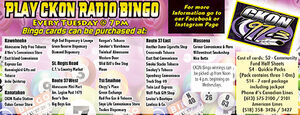Switching Drugs
Suboxone for drug addiction
Solutions to drug addictions are continuously evolving. The growing number of treatment centers, detox facilities, and addiction medications reinforce the ability to achieve recovery. The introduction of Suboxone for drug addictions has become successful in many recovering drug addicts. Suboxone’s primary goal is to treat and relieve the withdrawal symptoms associated with a recovering opioid addict. Traditionally, methadone clinics were a resource for recovering addicts; however, Suboxone for drug addictions has grown in popularity for successfully treating the physical opioid withdrawals.
The Effectiveness in Suboxone
Buprenorphine is the base chemical in Suboxone and Subutex. Suboxone is one of the marketed products of Buprenorphine. The difference between Suboxone and Subutex is the key ingredient Naloxone. The combination of Naloxone and Buprenorphine grants the ability to block opioid stimulation in the brain. The stimulation from opioids is what causes the euphoric feeling. The inability to achieve euphoria is what makes Suboxone effective when treating an opioid addiction. Abusing Suboxone to achieve a high is impractical and generally not achievable. Suboxone for drug addictions is increasingly being recommended and made available.
Suboxone Side Effects
Some patients may experience mild to moderate side effects such as headaches, dizziness, stomach pains, nausea or constipation. This is generally experienced during the early transition off of opioids like heroin. Communicating any of these symptoms and concerns with a doctor is imperative to ensure the correct dose is being administered.
Benefits of Suboxone
Suboxone is effective in reducing the pain and discomfort of opioid withdrawals as well as the cravings associated with withdrawals. The accessibility is another benefactor of Suboxone. A doctor can easily prescribe Suboxone and by following the prescription precisely a comfortable and effective detox can be accomplished. Administering the medication is easy and can be taken in private. The medication is dissolved under the tongue (sublingually). It is then absorbed into the bloodstream within a few minutes. The dosage is reduced over a period of time to ensure safety.
Abuse of Suboxone
These are risks of abuse and dependence to Suboxone. A dependency to Suboxone can occur with prolonged use of Suboxone. Unless gradually tapering off Suboxone, withdrawal symptoms can occur because Suboxone is opioid based-the withdrawals are parallel to that of opioid withdrawals.
Suboxone Withdrawal symptoms that may occur:
Diarrhea and Stomach Pains
Nausea and vomiting
Irritability, Restlessness and Anxiety
Discomfort, Muscle Aches and Pains
Cold-like symptoms
With an accurate dosage and gradually decreasing the medications these symptoms should not be present or should be mild in intensity.
Suboxone for Drug Addiction Treatment
The overall benefits of integrating Suboxone in treating an opioid addiction can greatly increase the success of recovery. Suboxone is introduced in many detox and drug addiction treatment centers, as well as being prescribed by medical professionals. Long term recovery options such as drug addiction treatment centers, In-patient and out-patient, residential and support groups can all be vital tools in recovery.
Oxycodone Withdrawal Symptoms
You will commonly hear about patients who are going through oxycodone withdrawal symptoms. Oxycodone is one of the most abused prescription medications in America. Do you know what exactly are the oxycodone withdrawal symptoms? Read on.
The group of narcotic pain relievers are called oxycodones. These drugs are similar to morphine and help relieving moderate to severe pain. They are given to patients for round-the-clock relief from pain due to trauma, injuries, muscle pain, fractures, neuralgia, arthritis, lower back pain and cancer pain. Oxycontin, a prescription drug, has been classified by the Drug Enforcement Agency as a Schedule II drug. This means that though it is approved for medical use, it has a very high risk of abuse and other related serious problems.
These drugs are addictive and habit forming. They should only be used by people who receive a specific prescription from doctor. This medication should never be shared as a pain killer with others and especially people with a history of drug abuse. Oxycodone can impair the ability to think and react. Thus, avoid driving and other activities when using oxycodone. If you are taking oxycodone, then totally avoid alcohol as it may lead to dangerous and fatal oxycodone side effects. There are many people, especially teenagers in America, who become addicted to oxycodone drugs. Even patients who were treated with oxycontin for pain management have been found to show oxycodone withdrawal symptoms. Let us learn more in detail about the oxycodone withdrawal symptoms.
Withdrawal Symptoms of Oxycodone
Oxycodone is a very strong habit forming drug and the body begins to develop tolerance because of the presence of this drug. This makes the body require high levels of the drugs to achieve the pain relieving effect. Thus, when patients are asked to terminate the use of these drugs like oxycontin, they exhibit oxycodone withdrawal symptoms, which are similar to the intensity of heroin withdrawal symptoms.
Oxycodone withdrawal duration begins within six hours of the last dose and can be seen up to one week. The oxycodone symptoms are very spine chilling as the patient undergoing oxycodone withdrawal symptoms suffers a lot. The common oxycodone withdrawal symptoms are:
• Abdominal cramps
• Diarrhea
• Vomiting
• Intense pain in the body
• Tremors
• Excessive sweating
• Anxiety
• Insomnia
• Muscle cramps with spasms
• Body chills
• Goose bumps
• Paranoia
• Agitated and aggressive behavior
• Increased heart rate
• Hyperactivity
• Dilated pupils
• Runny nose and eyes
• Depression
• Loss of appetite
A patient or drug addict undergoes a very difficult withdrawal phase that makes it very difficult for him or her to terminate the use of oxycodone completely.
Oxycodone Withdrawal Treatment
The oxyodone withdrawal symptoms involve many detoxification routes. The patient with the help of a support system in a hospital or drug rehab may be treated with the non-medical treatment that involves abrupt cessation of the drug. The medical oxycodone withdrawal treatment involves decreasing the oxycontin doses before total termination of the drug intake and clonadine administration or methadone administration. Methadone is the most common drug that is used to help people with heroine withdrawal symptoms. Other than this, there is no specific oxycodone withdrawal treatment. Behavior-oriented therapy is found to be a very common oxycodone withdrawal relief during oxycodone withdrawal treatment, as proven by research.
Oxycodone should not be terminated abruptly to minimize the withdrawal symptoms. Your doctor may slowly decrease the doses and will prove to be a very helpful support during the oxycodone withdrawal symptoms. Never ever abuse your body with mindless and excessive use of any kind of drugs. Even though it may prove to be very relieving and give you a high, the withdrawal symptoms prove to be a very horrific experience. Even if you have not used the drug as an addiction, never feel embarrassed to ask for help. With proper medical guidance, you will be able to overcome oxycodone withdrawal symptoms.











Reader Comments(0)